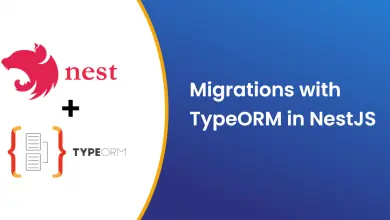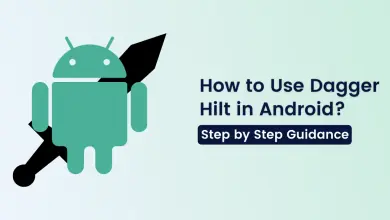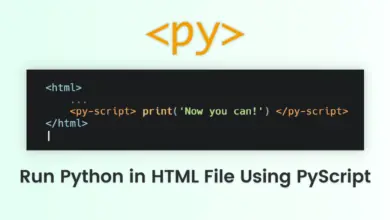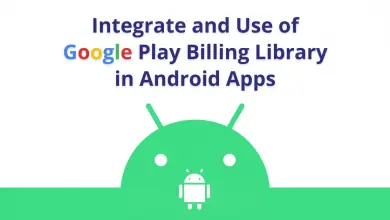Guide to Routes Management Using GetX in Flutter
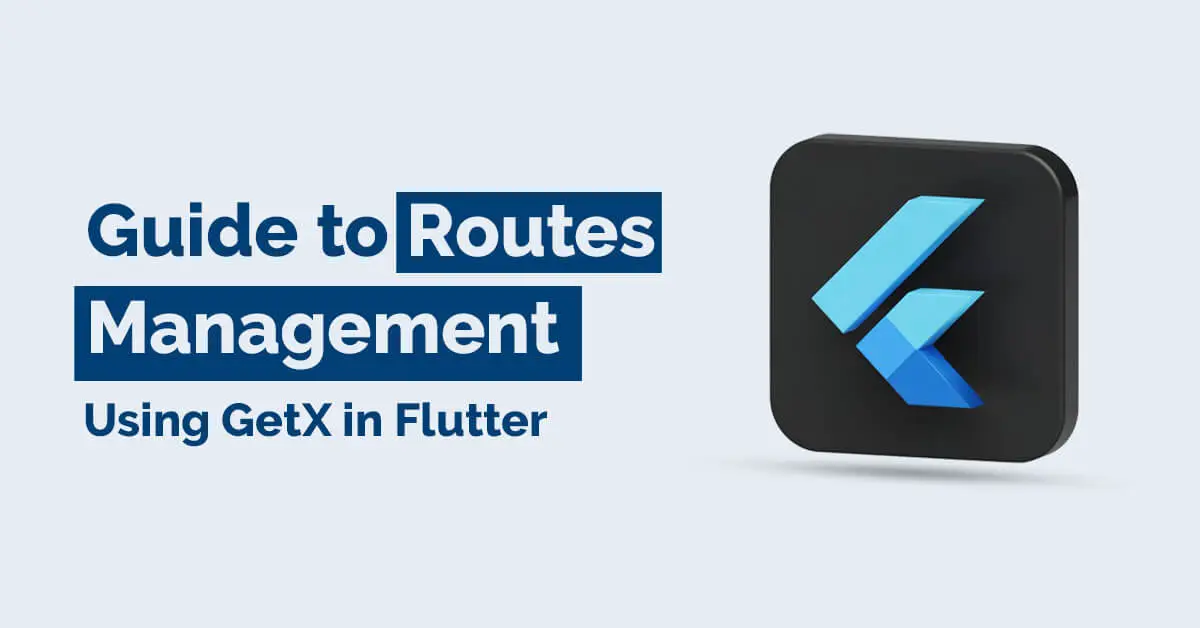
Almost every app needs to navigate from one screen to another in flutter technology. But flutter makes route management complex sometimes. So today I am going to give you a tutorial on how to manage routes in GetX Flutter.
You will ask why GetX is best for route management for flutter applications. The GetX makes route management very simple and easy to navigate between screens with transitions and sending the argument on the screen. Hence, GetX package is the most liked package in pub. dev as you can see in the screenshot.

Not only route management, GetX provides other services as well.
Such as
- State Management
- Dependency Management
- Local Storage
- GetX Server
- API Integration with GetConnect
However, we are going to see only route management for now, and below are the advantages of flutter GetX route management.
GetX Route Management Advantages
- Navigate between the screen without context.
- Can give transition animation between the screen.
- Can show snackbar, dialog, and bottomsheet without context.
- You can add middleware easily to protect the routes.
- Transfer the data through [arguments] very easily.
I will give you the GetX route management explanation by comparing it with flutter route management so you can understand it clearly.
Installation
So first of all, you need to install the latest package by running this command. This will install the latest available package in your project.
flutter pub add getAfter that, you need to change your MaterialApp to GetMaterialApp. After changing it you can use route management. If you want to use another service such as state management, dependency management, etc. then you don’t need to change to GetMaterialApp, stay with MaterialApp.
/// MaterialApp to GetMaterialApp for route management.
Widget build(BuildContext context) {
return GetMaterialApp(
debugShowCheckedModeBanner: false,
initialRoute: Routes.screen1,
getPages: getPages,
);
}
Routes Declaration
Now, let’s add all the screens or pages that you have in your application in a separate file as routes. dart.
/// Routes name to directly navigate the route by its name
class Routes {
static String screen1 = '/screen1;
static String screen2 = '/screen2;
static String screen3 = '/screen3;
static String screen4 = '/screen4;
static String screen5 = '/screen5;
static String screen6 = '/screen6;
}
/// Add this list variable into your GetMaterialApp as the value of getPages parameter.
/// You can get the reference to the above GetMaterialApp code.
final getPages = [
GetPage(
name: Routes.screen1,
page: () => const Screen1(),
),
GetPage(
name: Routes.screen2,
page: () => const Screen2(),
),
GetPage(
name: Routes.screen3,
page: () => const Screen3(),
),
GetPage(
name: Routes.screen4,
page: () => const Screen4(),
),
GetPage(
name: Routes.screen5,
page: () => const Screen5(),
),
GetPage(
name: Routes.screen6,
page: () => const Screen6(),
),
];
GetX Navigation
This is how you can define routes. Now, let’s navigate between the screen with some GetX best features.
1) If you want to navigate between the screen without context then I have to code like this.
Get.to(const Screen2());This is work same as,
Navigator.push(
context,
MaterialPageRoute(builder: (context) => const Screen2()),
);2) If you want to navigate between the screen by their names as we defined a class named Routes
Get.toNamed(Routes.screen2);This works the same as,
Navigator.pushNamed(context, Routes.screen2);You’ve seen that you can use flutter GetX routes without context and this is the best problem-solving feature in GetX.
Here are all the GetX routes compared with flutter routes.
| Get.to() | Navigator.push() |
| Get.toNamed() | Navigator.pushNamed() |
| Get.back() | Navigator.pop(context) |
| Get.off() | Navigator.pushReplacement() |
| Get.offNamed() | Navigator.pushReplacementNamed() |
| Get.offUntil() | Navigator.pushAndRemoveUntil() |
| Get.offNamedUntil() | Navigator.pushNamedAndRemoveUntil() |
| Get.offAndToNamed() | Navigator.popAndPushNamed() |
| Get.removeRoute() | Navigator.removeRoutes() |
| Get.offAllNamed() | Navigator.pushNamedAndRemoveUntil() |
| Get.close() | Navigator.popUntil() |
For now, only the navigation part is completed. Now, let’s learn about how we can send data between the screen easily without passing values between constructors.
Arguments – How to Send Data Between Screens in GetX
I want to send this map to the screen that I provide in the GetX navigation. So I need to just pass in the [arguments] parameter.
Map response = {
"data": [
{"name": "Parth Darji"},
{"name": "Darshan Popat"},
{"name": "Jitendra Mistry"}
],
"message": "All data get successfully"
};
Get.to(Screen1(), arguments: response);
After navigating the screen we need to get those arguments that we send in the GetX arguments parameters. So simply do this on your screen.
var data = Get.arguments;
print(data[“message”]);
Note: There is also one parameter called [parameters], it is working the same as arguments. But it is only supporting Map<String, String> type. And arguments support dynamic type, meaning you can send any type of arguments.
Transitions – How to Apply Transitions in GetX
On navigation, if you want to give a beautiful transition then here is the code, you can test it further.
Get.to(
LoginScreen(),
arguments: response,
// This is how you give transitions.
transition: Transition.leftToRightWithFade,
);
There are different types of transitions. You can see the list below.
- Transition.fade
- Transition.fadeIn
- Transition.rightToLeft
- Transition.leftToRight
- Transition.upToDown
- Transition.downToUp
- Transition.rightToLeftWithFade
- Transition.zoom
- Transition.topLevel
- Transition.noTransition
- Transition.cupertino
- Transition.cupertinoDialog
- Transition.size
- Transition.circularReveal
- Transition.native
You can also set the duration between navigation for transition.
transition: Transition.leftToRightWithFade,
// This is how you can set the duration for navigating the screen.
duration: const Duration(seconds: 3),
Also there are other parameters you can explore in the Get. to navigation.
- binding
- curve
- fullscreenDialog
- gestureWidth
- id
- opaque
- popGesture
- preventDuplicates
- routeName
Note: If you want to explore more about GetX, I cannot give you the full documentation here. You can press (the control + mouse left-click) button to navigate to the GetX library code. And you can explore all features that they provided.
Middlewares – How To Protect Routes in GetX
Now, let’s learn how to protect the routes so that unauthorized users cannot access them. For example, you want to create routes that only logged-in users can access. Mostly this can be used in the Premium screen in the mobile apps and for the web, it is very necessary. Then this will help you.
So first, you need to create a middleware file named (route_guard.dart) in your project. You can name any with the suffix of (_guard).
/// User cannot go to the dashboard screen if he doesn’t have a login token.
class RouteGuard extends GetMiddleware {
@override
RouteSettings redirect(String route) {
return userToken == null ? const RouteSettings(name:Routes.login): null;
}
}
Now, call this middleware in GetPage that we declare in routes. dart like this.
GetPage(
name: _Paths.dashboard,
page: () => DashboardScreen(),
middlewares: [RouteGuard()],
),
You can multiple middlewares in its List type. When this dashboard route is triggered in the application the RouteGuard middleware class will be called and it will determine whether userToken is available or not.
If a token is available then the user can navigate anywhere in the application except login because we can also code LoginGuard for logged-in users if the user is already logged then the user cannot navigate to the login screen. This is mostly useful in Flutter Web.
GetX Bonus Features
You can show dialog, snackbars, bottom sheets without context in GetX.
1) Dialog
Get.defaultDialog(
radius: 10.0,
contentPadding: const EdgeInsets.all(20.0),
title: 'title',
middleText: 'content',
textConfirm: 'Okay',
confirm: OutlinedButton.icon(
onPressed: () => Get.back(),
icon: const Icon(
Icons.check,
color: Colors.blue,
),
label: const Text(
'Okay',
style: TextStyle(color: Colors.blue),
),
),
cancel: OutlinedButton.icon(
onPressed: () {},
icon: Icon(Icons.tap_and_play),
label: Text('label'),
),
);
2) Snackbar
Get.snackbar(
'title',
'message',
snackPosition: SnackPosition.BOTTOM,
colorText: Colors.white,
backgroundColor: Colors.black,
borderColor: Colors.white,
);
3) BottomSheet
Get.bottomSheet( Container(
height: 150,
color: Colors.grey,
child: Center(
child: Text(
'Count has reached ${obxCount.value.toString()}',
style: const TextStyle(fontSize: 28.0, color: Colors.black),
),
),
),
);

Key Benefits of Cross-platform App Development
Cross-platform development
Cross-platform mobile development helps create apps with the same UI/UX as native mobile applications with a single codebase, the cross-platform mobile application development strategy creates applications that work on many different operating systems, including Windows, iOS, and Android. Nowadays this approach is followed by all industries especially by startups because this approach takes less time to develop and enter early in the market.
2) Single Codebase
Single codebase from multiple platforms such as iOS, Android, Web, macOS, Windows, and Linux.
3) Flutter
It is built with Dart Programming, which is compiled ahead of time (AOT) into native code. Flutter provides a mechanism to call native code for both iOS (Objective-C/Swift) and Android (Kotlin/Java) using Platform Channels
4) Faster MVP Development
We all are living in a competitive market. If you have a unique concept and if you want to develop faster and test in the market very quickly then cross-platform application development is the perfect fit for you.
Alternative Programming Languages of Flutter
1) React Native
This is an open-source JavaScript framework designed for creating mobile applications on multiple platforms like Android, iOS, and web applications. It will help any organization to build an application with a single code base and run on multiple platforms. It also helps to save time and money for the development.
2) Ionic
Ionic is a robust cross-platform, open-source UI toolkit. It is used for creating native-quality mobile, web, and desktop applications using web technologies like CSS, HTML, and JavaScript/TypeScript.
3) iOS
iOS is the operating system developed by Apple. iOS application development is the process of making mobile applications for Apple hardware including iPad, iPhone,iPod Touch, apple watch, and TV application. We can develop mobile applications using Swift programming language or Objective. After the development, we can deploy on the app store for users to download.
4) Android
Android is an operating system developed by the google. Android application developers can help to develop in the process of making mobile applications for Android devices. We can develop mobile applications using Java, Kotlin and C++ language. After the development, it deployed on the Play Store for users to download.
Use Cases
Here is the list of general use cases for flutter app development
- Mobile applications (iOS and Android).
- Web applications (using Flutter Web).
- Desktop applications (for Windows, macOS, Linux).
- Embedded systems (e.g., IoT devices).
- Travel application development
- E-commerce application development
- Health and Fitness application development
- Education and learning application development
- BLE application development
- IOT application development
- Video conferencing application development
- Dating application development
- Scoring application development
Databases Supported by Flutter
Flutter programming language supports local and cloud-based databases such as:
1) SQLite
SQLite is a database engine developed in the C programming language. It contains a zero-configuration , serverless, self-contained and transactional SQL database engine.
2) Hive
Hive is a lightweight and superfast NoSQL database that can be used to store local data storage in Flutter and Dart applications. It is mainly used to store a small amount of data.
3) Shared Preferences
Shared preferences storage is used in mobile application development allowing developers to store small amounts of data in the form of key-value pairs on a user’s device. This is also a local storage database for the Flutter programming language.
4) Firebase Firestore
Firestore is a NoSQL document database built for easily storing data, automatic scaling, high performance, and ease of mobile and web application development. It is a cloud database and supports live synchronization and offline support on Android and iOS.
5) Firebase Realtime Database
It is a NoSQL document database that allows you to sync and store your data in real-time with your application.
6) AWS Amplify Datastore
Amplify DataStore provides a programming model for leveraging shared and distributed data without writing any additional code for offline and online scenarios. It is a cloud database and supports mobile and web development.
Conclusion
That’s all done for flutter GetX route management. GetX routing is a simple and efficient way to handle navigation in Flutter apps. There is more to tell about the GetX framework but it is a very big framework and I think in one blog we cannot add everything.
Managing routes in Flutter can be made simple and easy with the help of GetX. It is an excellent package for route management and simplifies the process of navigating between screens in Flutter apps.
If you use the whole GetX ecosystem then it works best. If you like this post then share it with your flutter developer colleagues and make sure that you follow OneClick blogs to get more tutorials like this on flutter.


